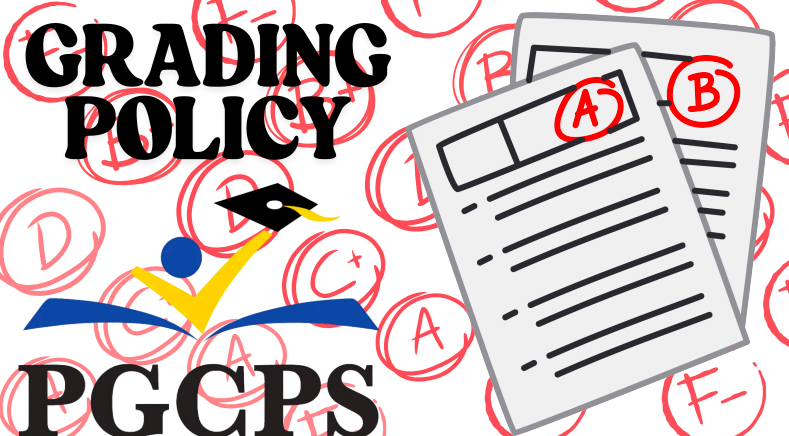Beginning in the 2023-24 school year, Prince George’s County Public Schools (PGCPS) implemented a revised grading policy designed to promote equity and provide students with more chances to succeed. The policy allows students to pass a course by earning passing grades in just two out of four quarters, regardless of their performance in the other quarters. While this model is intended to encourage growth and recovery, many educators and students are discovering that it also presents significant challenges to academic standards and classroom accountability.
Mr. Francisco Gomez, a Media Arts teacher in PGCPS, offers a balanced view of the policy.
“The current PGCPS grading policy was designed to increase equity and opportunity by allowing students more chances to succeed across the school year,” Mr. Gomez explains. “Rather than relying solely on cumulative points, it allows a student to pass if they earn a passing grade in at least two quarters.” Many appreciate that the policy promotes reassessment and growth, but warns it may also lower expectations for some students.
One of the most debated aspects of the policy is that a student can technically pass a class with two D’s and two E’s or even one C and three failing quarters.
The way the policy works is as such: According to PGCPS Administrative Procedure 5121, he primary component is that students must receive at least a D-average to pass a class. That minimum D-average is determined by the following factors:
- Each letter grade is assigned a number-value: A= 4 points, B= 3 points, C= 2 points, D= 1 point, E= 0 points.
- Final grades are determined by the following number-value range:
- An A-final grade: 3.5-4.0 or higher
- A B-final grade: 2.5-3.49
- A C-final grade: 1.5-2.49
- A D-final grade: 0.5-1.49
- An E (failing) final grade: 0.0-0.49
- To calculate final grades, assign each quarter grade to the equivalent numerical value and then divide by 4 (four representing the total number of quarters in the school year). Because the very lowest numerical score students can receive to earn a passing D-average is 0.5, a student can receive one C (equivalent two 2 points), complete no other course work for the other three quarters, and still get a passing D since 2 points divided by 4 quarters is the minimum 0.5 point requirement.
Although “easier” to pass in the school year, Mr. Gomez sees a flaw in the system that may hinder students in the long run.
“This may not align with their overall content mastery or preparation for state assessments like the MCAP, MISA, SAT, or ACT,” Mr. Gomez notes.
While some students benefit from the chance to recover from a poor start, others use the policy as a loophole to disengage after securing the minimum needed to pass. “I’ve even had students say they don’t need to try anymore because they already passed for the year,” Mr. Gomez said.
The policy’s impact on motivation is mixed.
One anonymous 10th grader commented, “Personally, I like this grading system because it lets me get a second chance or boost if I am struggling to pass my classes.” This highlights the policy’s strength: it offers struggling students an opportunity to catch up and avoid failure.
However, without stronger ties to attendance and participation, some students exploit the flexibility.
“I basically just try hard my first two quarters and I don’t really care about after,” says an anonymous junior.
Other Maryland counties have different approaches. Montgomery County Public Schools (MCPS), for example, uses the “50 percent rule,” where students receive a minimum score of 50% for making an attempt, aiming to reduce discouragement. However, MCPS is now considering changes to curb grade inflation, including final exams and stricter grade rounding.
Despite criticism, PGCPS’s graduation rate rose to 80.02 percent in 2024, a 5.6 percentage point increase from the previous year, outpacing the state’s overall rise.
Still, educators like Mr. Gomez argue that numbers alone shouldn’t define success. “Flexibility doesn’t mean lower expectations,” said he said. “It means giving students multiple ways to meet them.”
To improve the policy, many teachers recommend including attendance and tardiness in grades and report cards, better aligning with real-world expectations.
“Include educators in the revision process… and align grading with attendance, which impacts our state report card,” Mr. Gomez advises.
In its current form, the PGCPS grading policy reflects noble intentions. However, if it’s to prepare students for life beyond the classroom, it needs refining not just for equity, but for excellence.
The question still stands, does this grading policy really allow us to do what we should be doing in school: gain knowledge?
What do you think? Sound off in the comments!







